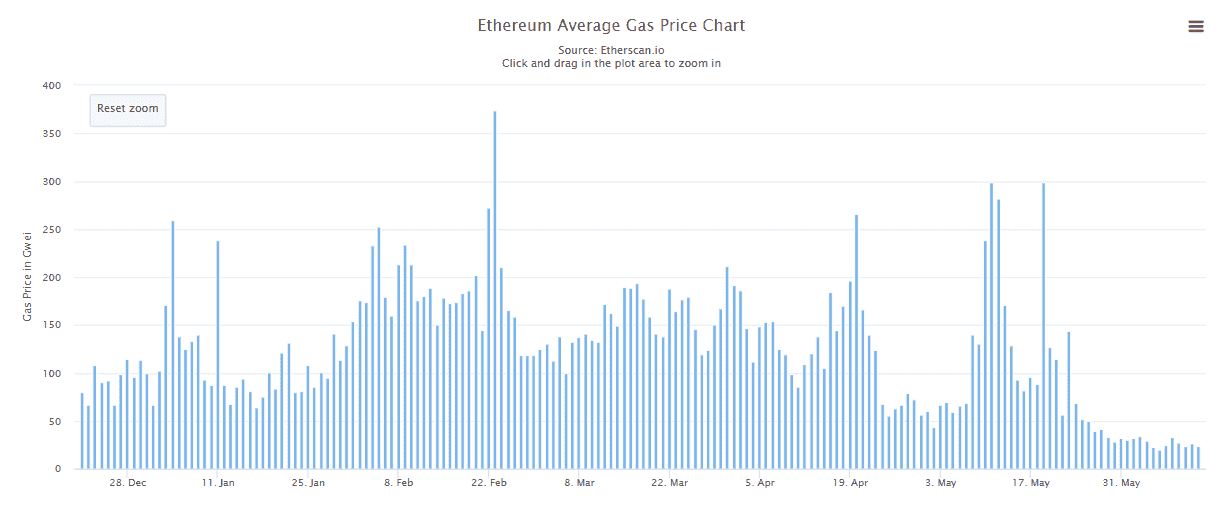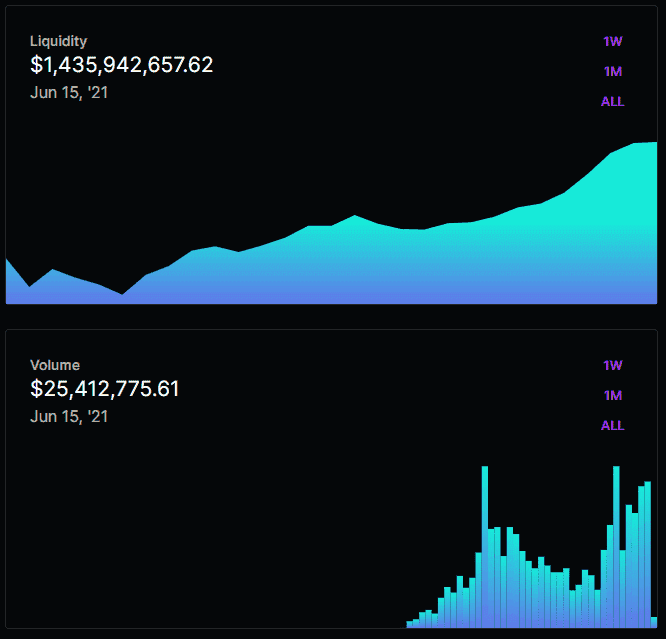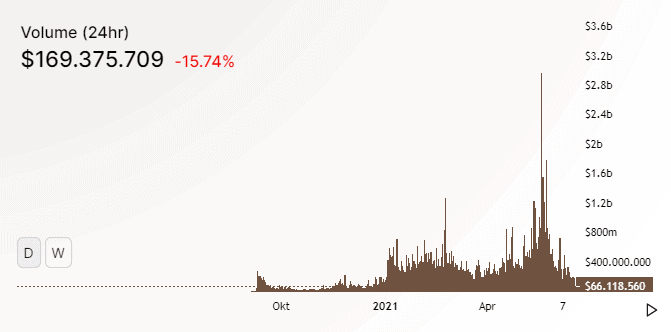Falling prices and a “bank run” at Iron Finance. The decentralized finance (DeFi) sector is not getting anywhere and some investors are unsettled – rightly?
Not only have the prices of many DeFi projects fallen in recent weeks, the trading volume on decentralized exchanges (DEX) has also decreased significantly. If you take a look at the Ethereum transaction costs and the DEX volume, you can see that these have also fallen sharply. The decline does not seem to have been of a purely cyclical nature.
The trading volume on decentralized exchanges such as SushiSwap (SUSHI) or UniSwap (UNI) has fallen over 80 percent on the Ethereum mainchain.
At the same time, the data from etherscan.io show that the usury of Ethereum fees has come to an end. For comparison: on February 23, investors had to pay an average of 373 gwei, while it is currently just nine gwei per transaction.



That represents a decrease of over 95 percent. In addition, the “ETF token” DeFi Pulse Index (DPI) had to record a price decline. On a weekly basis, DPI drops 6.68 percent. But why is the DEX trading volume on the Ethereum mainchain falling and why are ETH transaction costs falling so sharply at the moment?
Changes in Decentralized Finance on Ethereum
As is so often the case, several factors are responsible for the declines. First of all, there is polygon. The Ethereum scaling solution has seen a real boom in the past few weeks. Total Value Locked (TVL), i.e. the capital on Polygon’s blockchain, now comprises over six billion dollars.
In addition, liquidity pools for liquidity providers on platforms such as SushiSwap or Quickswap are currently extremely profitable and the transaction costs are low. They even made sure that star investor and billionaire Mark Cuban invested in Polygon (MATIC).
In addition, it is now the case that a large part of the trading volume that was once processed on the Ethereum blockchain by decentralized exchanges has now migrated to Polygon. This is best seen in the example of SushiSwap. While the trading volume of SushiSwap on the Ethereum mainchain has continuously decreased (see above), the SushiSwap trading volume and the TVL on Polygon has been growing steadily.



But that’s not the only reason ETH transaction costs are so low right now. In particular, the decline in volatility and prices of many cryptocurrencies is responsible for the fact that activity in DeFi space has decreased.
When the markets are volatile and on the way up, it means there are significantly more trades as traders are more actively managing their positions. In addition, there are many more transactions on Ethereum in such market phases, as there is speculation with riskier crypto currencies such as SafeMoon or Shiba Inu.
Therefore, lower volatility and falling prices mean that there are fewer speculative and arbitrage opportunities for traders. This in turn has the consequence that the entire activity in the DeFi space as well as the transaction fees decrease.
Is the DeFi Sector Dead?
Hardly likely. There are still billions of dollars in the smart contracts of DeFi applications and more and more developers are pouring into the emerging sector. In addition, investors continue to invest heavily in the DeFi space – most recently the DeFi project dYdX collected in a financing round $ 65 million from investors.
Still, the sector is still in its infancy and inexperienced investors need to be careful in the Wild West of decentralized finance. The latest “bank run” at Iron Finance proves this again.
From 100 to 0: “Bank Run” destroys millions
The course of the DeFi project Iron Finance (TITAN) collapsed massively on the night of June 17th. TITAN fell from 65 USD to almost 0 USD (0.000008225 USD) in just a few hours, making it practically worthless. The Iron Finance team now has a report releasedthat explains why the TITAN crash occurred.
According to this, large investors made massive sales that caused panic among the other TITAN owners. The result: Many were selling their titanium tokens en masse. The team speaks of a modern “bank run”.
What we have just witnessed is the worst that could happen to the protocol, a historic bank run in the modern high-tech crypto space. Remember that Iron.finance is a partially secured stablecoin that is similar to reserve banking in the modern world. When people panic and run to the bank to withdraw their money in a short period of time, the bank can and will collapse.
Mark Cuban was also a victim of this incident and has now commented on the incident at Iron Finance. Compared to the US news portal Bloomberg, the star investor admits to have been “too lazy” to penetrate the mathematics of the algorithmically backed stablecoin IRON. Cuban suggested that there should be regulatory guidelines for stablecoins.
